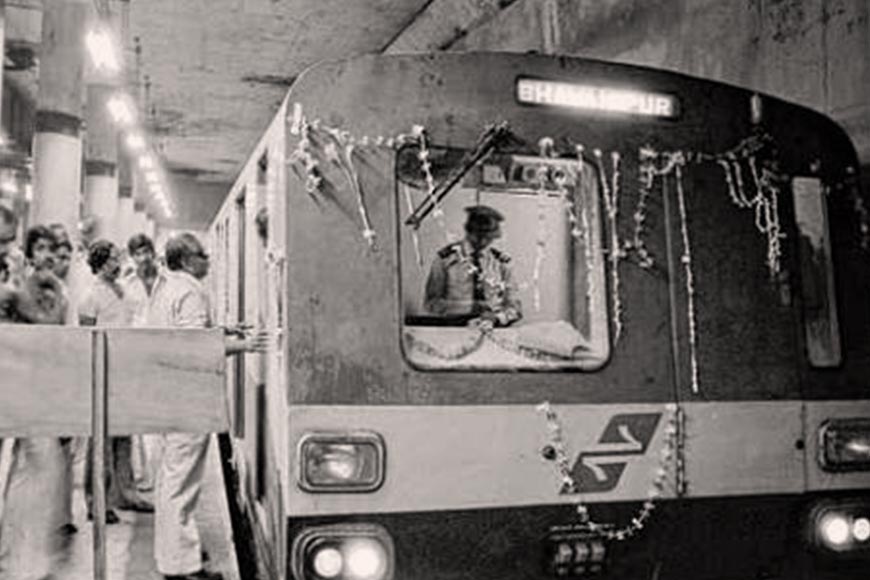The British had dreamt of a metro tract in Kolkata way back in 1921!

Kolkata is home to a large population belonging to a large area. Every day, people have to travel from their residences to their office, to schools and so on. Some distances were too long to cover even for the bus and the taxi. Even if there were bus routes available it was not possible for most to spend a lot of time and expenses only for travelling. Metro services served as a way out. After the beginning of the metro services, travelling became a lot easier and comfortable for people. The foundation stone of the Kolkata metro project was laid by the then Prime Minister of India, Indira Gandhi, on 29th December, 1972 and the construction had started since the following year. Kolkata thus turned the first city of India to start metro services.
Well, the story of Kolkata’s first metro is not over yet as there is a bit of history attached to it even from the days of the British Raj. It is well known that Kolkata was one of the adored cities of British India, the amount of interest the British had and the time they spent decorating the city speaks for itself. It was after all the British-India capital and to make it happening, the British did their very best to make it look like London and also introduce services and infrastructure that would help them. A majority of these ideas and projects were implemented in Kolkata thus and one such ambitious project was the idea of underground metro services.
And can you imagine that idea was floated way back in 1921? Harley-Dalrymple Hay was the first person who found it necessary for Kolkata to install metro services, something similar to London tube services. He was a British civil engineer, born in Birbhum, who drew the blueprint for a metro line in Kolkata in 1921, that was supposed to connect Hooghly to Howrah through an underground tube. Dalrymple was involved with London’s iconic Piccadilly Circus Tube Station. Inspiration from the Piccadilly Circus Tube led to this idea. The train was supposed to travel under the Ganga River through a tunnel. He inspected the soil of the city; accordingly, the land was supposed to be dug. With that, other areas also needed attention such as the flow of the river and the dimensions of the tube, everything was handled by Dalrymple’s expertise and under him a team would work to bring the Tube Railway, as a precursor to the modern Metro.
In 1921 India and even for the world, this was indeed a revolutionary idea -- a totally new concept for the masses. When news of such a mode of transport made headlines, specially in an age when palkis and horse carriages still ran on the roads of Kolkata, the locals had mixed feelings. Some were happy at the thought that a new kind of public transport will make their lives a bit easier, others still wondered whether the project was even real and viable. The doubt was cleared when the British Indian Railways recognized the report of the Calcutta Communication Committee. The budget for the construction was huge – as per today’s estimate it was fixed to around 35 million euros or 5 crores in Indian currency.
Documents of the Calcutta Municipal Corporation provides authentic information on this report and that such a proposal went around. The documents reveal that the British government in India had approved Hay’s plan to build an East-West tube railway. Unfortunately, the project that was supposed to go from Bagmari in Calcutta to Salkia in Howrah under the Hooghly, was abandoned due to lack of funds in 1923.
Dalrymple not only apprehended but was sure that the city needed an east-west metro line and not only that, the city would benefit further if a north-south metro line could also be facilitated. We get this information from his survey report. And what an irony? The idea that was devised by the Indian born British civil engineer, finally has taken shape in the 21st century, in the modern bustling metropolis of Kolkata, as the construction between the east-west metro is up and running with the help of German machines and best of global and Indian experts.
Dalrymple can be called a visionary as he somehow foretold the future of the city’s transport and transit network with the help of his extraordinary skills in the field of civil engineering. The metro being built will keep reminding us of this piece of history. The city of nostalgia will get another of its dreams fulfilled. Hay was correct when he conceptualized this project in the last century and knew that people of Calcutta will get big time help to get this facility. Kolkata can be called a city of firsts from this aspect. These little details are milestones that make a city memorable and vibrant.










